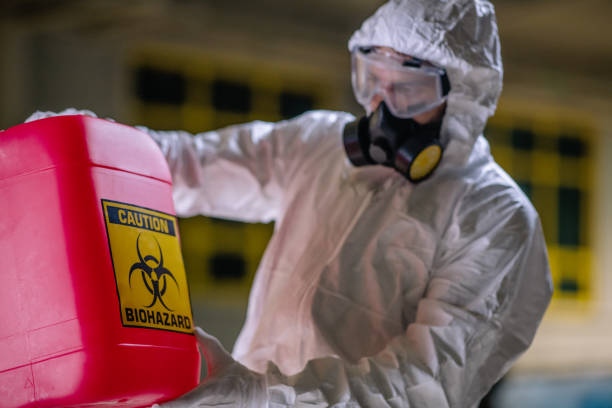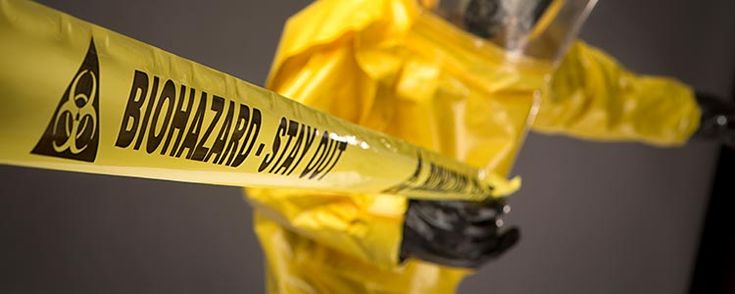Biohazard cleanup is a critical process aimed at safely removing hazardous substances, like bodily fluids, chemicals, or biological contaminants, to protect people and prevent further contamination. When faced with potentially dangerous biological materials, it’s essential to follow effective cleanup and decontamination protocols. This article covers the essential steps, safety measures, and best practices in biohazard cleanup and decontamination.
What Is Biohazard Cleanup?
Biohazard cleanup refers to the thorough removal, cleaning, and disinfection of areas that contain biological substances posing health risks. Common examples of biohazard incidents include crime scenes, medical accidents, chemical spills, and more. Cleanup is typically done by trained professionals who know how to handle potentially infectious substances and use specialized equipment and procedures to keep areas safe.
Why Is Biohazard Cleanup Necessary?
The risks associated with biohazards are serious, and proper cleanup is critical to protect health and safety. Exposure to biological contaminants like blood, bodily fluids, or chemicals can result in infections, disease transmission, and other health hazards. In areas like East Los Angeles, CA, emergency biohazard cleanup services are essential for quickly addressing such hazards, as contaminants may carry pathogens such as viruses (HIV, Hepatitis B and C) or bacteria. Effective cleanup ensures that these risks are minimized by eradicating pathogens and restoring a safe environment for residents and workers.
Key Steps in Biohazard Cleanup and Decontamination
The biohazard cleanup process involves several crucial steps. Each step must be conducted carefully to ensure thorough decontamination and safety.
1. Assess the Scene
Before beginning cleanup, professionals must assess the scene to identify hazards and create a plan. This assessment includes identifying the type and extent of biohazardous materials involved, such as blood, bodily fluids, or hazardous chemicals.
Example: In the case of a crime scene, cleanup technicians evaluate the areas affected by blood splatters and fluids and identify the surfaces or objects contaminated.
2. Establish Containment Zones
Proper containment minimizes the spread of contaminants. Cleanup teams use plastic sheeting and barriers to create designated zones to prevent biohazards from moving to unaffected areas. This containment ensures that pathogens do not travel outside the contaminated area.
Example: If a hospital room contains biohazards, technicians may seal off doors, windows, and vents to contain the area and prevent cross-contamination.
3. Wear Personal Protective Equipment (PPE)

Wearing appropriate PPE is essential to protect cleanup personnel. PPE typically includes gloves, masks, full-body suits, face shields, and sometimes respirators, depending on the level of contamination.
Example: For handling bloodborne pathogens, technicians wear gloves, masks, and waterproof coveralls to ensure no skin contact with contaminants.
4. Remove Biohazardous Materials
This is the core step where professionals remove all visible contaminants, such as blood, bodily fluids, or tissues. Using specialized tools, technicians place the waste in biohazard disposal bags that comply with local regulations for safe disposal.
Example: After a traumatic incident, blood-stained clothing, bedding, or other materials are carefully removed and placed in designated biohazard bags.
5. Sanitize and Disinfect
After physical removal, all affected surfaces must be thoroughly sanitized and disinfected. Using EPA-approved disinfectants, technicians’ clean floors, walls, and objects, ensuring pathogens are completely eradicated.
Example: In a laboratory spill, technicians may use a bleach solution to disinfect all work surfaces, tools, and equipment exposed to hazardous chemicals.
6. Use Specialized Equipment and Techniques
Certain biohazards require specific equipment, like HEPA-filtered vacuums, to capture contaminants in the air. UV light or ozone treatments are also sometimes used to destroy pathogens on a microscopic level.
Example: For mold contamination, HEPA vacuums are used to capture airborne spores, preventing them from settling on clean surfaces.
7. Conduct a Final Inspection
A final inspection ensures that all contaminants have been effectively removed and that the area is safe. This step often includes using testing kits to check for remaining pathogens, ensuring thoroughness before declaring the area safe for re-entry.
Example: After a biohazard cleanup in a healthcare facility, a manager conducts an inspection and tests for any traces of bacteria to confirm cleanliness.
Safety Precautions in Biohazard Cleanup
Safety precautions are essential to prevent exposure to hazardous substances. Here are some best practices for ensuring safety during the biohazard cleanup process:
- Training and Certification: Cleanup teams must be certified and trained in handling biohazards and infectious waste.
- Regular Equipment Checks: PPE and cleaning equipment should be regularly inspected and maintained.
- Proper Waste Disposal: All biohazard waste must be disposed of according to local, state, and federal regulations, ensuring no cross-contamination.
- Ventilation Management: Proper ventilation is necessary to reduce airborne hazards and prevent respiratory exposure.
When Should You Call a Biohazard Cleanup Professional?
Not all situations require biohazard cleanup professionals. However, in cases involving substantial bodily fluids, crime scenes, chemical spills, or potentially infectious diseases, Biohazard Cleanup Orange County CA services provide the expertise needed to handle these hazards safely. Attempting to clean up biohazardous materials without proper training or equipment can increase exposure risks and worsen contamination, making professional intervention essential in these circumstances.
Conclusion
Biohazard cleanup and decontamination are processes that ensure public safety and health following exposure to biological hazards. By following the essential steps in cleanup—from scene assessment to final inspection—cleanup professionals can ensure that spaces are effectively decontaminated and safe for use. When dealing with biohazardous materials, always prioritize professional services to guarantee thorough cleaning, appropriate waste disposal, and maximum safety.
Following these steps can help maintain safe environments and protect both individuals and communities from the health risks associated with biohazard exposure.


